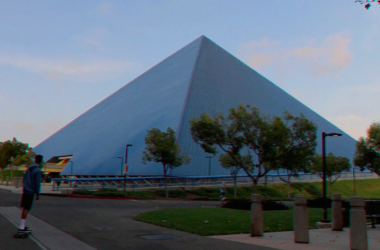The recognizable beady-eyed, trash can-diving campus fox squirrel, though social media famous and one of many pseudo school mascots, was not always on campus.
Much like the campus, the fox squirrel that is so integral to the Long Beach State image became a part of Long Beach over time.
Before, when CSULB was farmland, the campus and surrounding areas were dominated by the California ground squirrel, which exhibits a less bushy tail and a light spotted fur coat and the western gray squirrel.
“Western gray squirrels, which are the native tree squirrels around here, they are much more shy, they are much more timid and don’t respond well to humans,” said Ted Stankowich, associate professor of biological sciences.
The ground squirrel was pushed off the main campus. According to David Huckaby, professor emeritus of biological sciences, they can still be found in the flat areas on campus near Bellflower Boulevard.
However, the fox squirrel was able to habituate the greater Los Angeles area and almost completely replaced the western gray squirrel population.
“They’re so used to people,” Stankowich said. “They live in a world where they become really habituated really quickly.”
According to historical accounts, the fox squirrel’s journey began not too far from campus, at the Sawtelle Veterans home in West LA right before 1904. Civil War veterans from the Mississippi Valley who resided at the home kept them as companions or cooked them in squirrel stew. Legend has it they were eventually let go by the veterans and began to roam LA.
Between 1913 and 1921, the western gray squirrel populations were decimated by mange. Later, western gray squirrels were also driven out by urban and housing developments.
“That’s why when humans invaded Los Angeles, western grays were…driven out of areas and don’t live among us anymore,” Stankowich said.
According to Stankowich, unlike the western gray, the fox squirrel is less afraid of new things and new people and is more aggressive among predators and towards humans.
Because the fox squirrel serves the same ecosystem roles as the western gray squirrel and had a penchant for human interaction, they were able to take the place of the gray squirrel.
In the 1980s, as the squirrels were expanding outwards, they were also introduced to El Dorado Park by Long Beach citizens. Some may have also been brought to the area by Iowan transplants who wanted to bring a piece of Iowa to Long Beach.
Huckaby said their proliferation on campus was quick.
“When I first came here in 1973, they were not on the campus,” Huckaby said. “I cannot remember when I first started seeing them, but it was a few decades ago.”
Food and guaranteed safety are what drew the squirrels to the campus.
“As long as they can find ample food, things to climb, nest sites up in trees, they can live [here],” Stankowich said.
Even though the campus fox squirrel is a more recent addition to the campus than Prospector Pete, they have found themselves in the midst of campus culture. Squirrel merchandise can be found on sale at the 49er Shops Bookstore, Instagram pages gush over the impish squirrels and many students thought the fox squirrel should have been the mascot replacement.
The fox squirrel has found itself in the hearts and minds of many students in the short amount of time they have resided here.
According to sociology professor J. William Gibson, “Campuses develop new…icons when a substantial part of the student population no longer feels any positive connection to the official mascot.”
Squirrels are probably one of the closest interactions that students have with wildlife, which also adds to their appeal.
“There’s a natural urge for us to be near wildlife, and when the squirrels are so close to us…it’s a natural thing for people to want to be close and have an interaction with them,” Stankowich said.
However, Brett Mizelle, director of American studies who has been researching and observing the squirrels on campus for the past couple of months, notes that students may see something of themselves in the campus fox squirrels.
“Maybe they appeal to our sense of resilience,” Mizelle said. “[Squirrels] managed to make it, they somehow managed to survive, just like the students too.”




